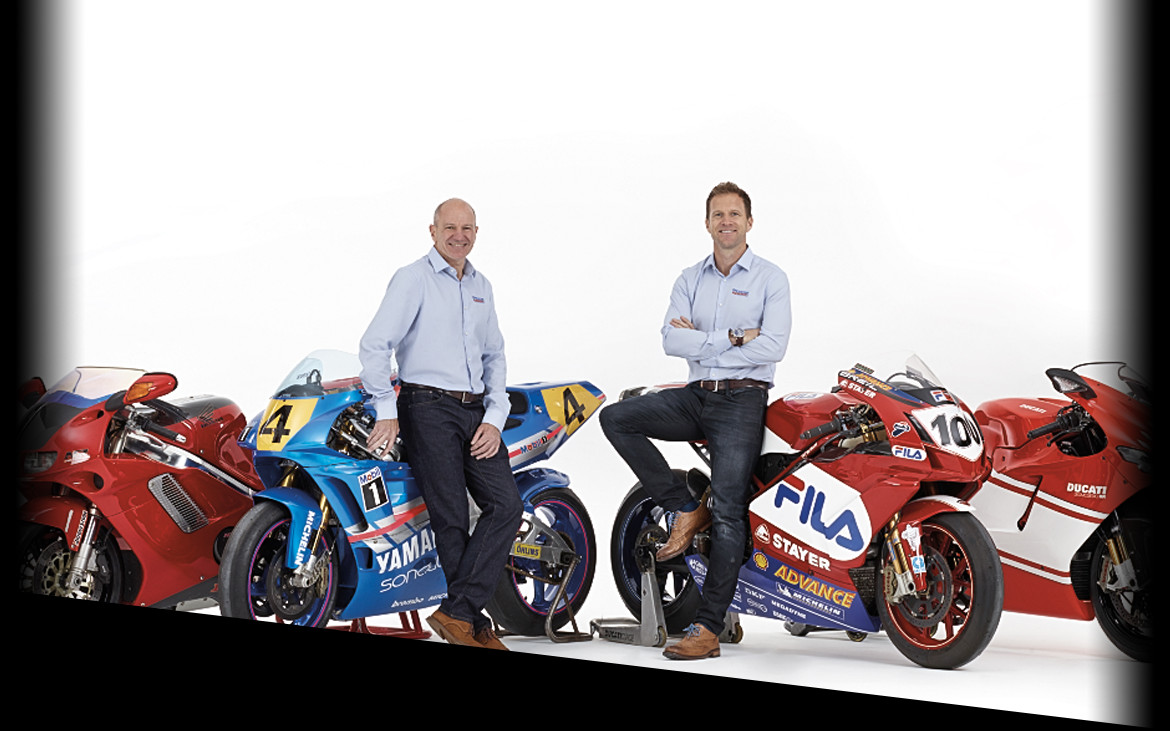
0333 0053 100

0333 0053 100


“As a motorcycle obsessed teenager of the seventies, I can’t say that any BMW was really up there on my wish list. I’m probably in the minority but the big boxer twin engine that seemed to feature in every model looked
to be a bit big and cumbersome for my nine stone puny physique at the time. What do I know though, as the continued evolution and success of this motor has, of course, been paramount for the German manufacturer. and this layout remains a cornerstone
of their range today.
“Things changed for me with with the arrival of the F800 range. This smaller more manageable model was much more akin to my taste when it came to performance and styling. I first sampled this bike on roads and tracks at its Cape Town launch
in 2007 and liked it from the moment I pushed the starter button. Ten years on and it's even better, with steady development and the numerous sport/touring/adventure variations. Being such an all-rounder, it ticks nearly every box for me and is
user-friendly to boot.
“I can’t sign off though without mentioning the amazing BMW S 1000 RR. For many years BMW produced some models with what could be called, at best, a ‘sporting nature’ until they decided to stun the world in 2009 with the first true Bavarian super sports bike.
Being German, the claimed power, weight and performance figures were 100% accurate and they just happened to eclipse the opposition at the time. The electronics package also set a new benchmark so as a consequence we’re all winners, as the competition soon fought back, bringing some wonderful bikes into the superbike boxing ring. Even better, the story doesn’t end there as, in 2019, we saw an all-new S 1000 RR. The bar has been raised yet again and I've always loved a healthy superbike competition!”

“This may surprise many people, but since I stopped racing in 2010 I’ve spent more time riding BMWs than the bikes of any other manufacturer. I’ve ridden every version of their 1000cc road bike, the S 1000 RR, and it’s
been really interesting to see how this bike has improved - it just gets better and better.
When I do track days or my laps for BT Sport MotoGP, a BMW is always my first choice as I know the bike so well. I can ride it hard and within a lap, I
can be close to the limit. I always turn the ABS and traction control off as I’m very old school and I like to control those areas of riding by myself. I’m excited to see how they get on in their return to world superbikes, with their
full factory effort.”
Getting BMW motorbike insurance through Mackenzie Hodgson is so straightforward, our online form takes minutes to complete and you could have a quote in minutes, or you can call the experts in our call centre to get the exact quote you need for
your bike.
Whether you are after comprehensive, third party fire and theft or just third party our agents can ensure you get the cover you need for you BMW bike.
Bayerische Motoren Werke, a Munich-based firm known for manufacturing engines for aircraft, boats and trucks, unveiled its first motorbike at the Berlin Motor Show in 1923. The R32 had black paint and a blue-and-white propeller badge on its tank,
a tubular steel frame, and was powered by a 494cc air-cooled, flat-twin engine with shaft final drive – setting a format that is still thriving almost a century later.
Chief engineer Max Friz’s R32 made 8.5hp, was good for over 50mph, and its transverse mounted cylinders were well placed for air-cooling. Less than a year after it entered production, BMW engineer and racer Rudolf Schleicher won a hill climb
near Munich, recording the firm’s first ever competition victory.
BMW’s new two-wheeled division rapidly made progress. An early chassis development was the hydraulically damped telescopic fork, which was a world first for production bikes in 1935, when fitted to the 750cc R12 and R17 models. Three years later
the rear end received an upgrade when the R51 was fitted with a plunger rear suspension system.
The Thirties saw improvements to the boxer engine. The R17 produced 33hp and had a top speed of over 85mph, making it one of the most powerful production bikes of the time. BMW’s supercharged race bikes and streamlined record-breakers gave the
marque a glamorous image, helping push total production past 100,000 before the outbreak of World War II. BMW ace Ernst Henne set a string of speed records on streamlined bikes, many of them on sections of deserted autobahn.
In racing, BMW came closest to solo world championship glory in 1956 when Walter Zeller was runner-up to MV Agusta’s John Surtees in the 500cc class. The firm had much more success in the sidecars, to which the low-slung boxer motor was ideally
suited. Between 1954 and ’74 BMWs won 19 riders’ world titles and 20 manufacturers’ championships, with Klaus Enders and Ralf Engelhardt taking six of them.
The Sixties was a difficult decade for BMW’s bike division, as growing prosperity resulted in a boom for car sales at the expense of motorcycles. The firm abandoned single-cylinder bikes in 1966, and moved two-wheeled production from Munich
to Berlin. In 1969 the new bike factory began production of the /5 series, with R50/5, R60/5 and the flagship R75/5, which proved popular.
In 1973 BMW celebrated its 50th anniversary by introducing the /6 series, including the 900cc R90/6. Star of the range was the R90S, a sportster that added the world’s first production bikini fairing to a specification that included
big Dell’Orto carbs and a maximum output of 67bhp. The R90S was fast, refined, fine-handling and comfortable; arguably the finest all-round superbike of its day.
The R100RS that followed in 1976 was the first production bike to feature a wind tunnel developed full fairing, beginning a new era of streamlined superbikes. Combining its 980cc, 51bhp boxer engine’s cruising ability with stable handling and
two-up comfort, it was a fine long-distance machine. The R100RT, which followed two years later with a bigger fairing and more upright riding position, gave another classy option for touring riders.
Despite the quality of those models, BMW’s motorcycle operation was in serious difficulty by the late Seventies. With sales falling heavily in the important US market, and a widespread belief at BMW that the boxer motor was coming to the end
of its life, the company’s boss seriously considered closing the bike division.
That this did not happen was largely due to the stunning success of a most innovative and unlikely model: the R80G/S. Based on an enduro boxer that had been successful in German and European competition, the Gelländer/Strasse (Off-road/Street)
combined a 798cc motor with a chassis based on the R65 roadster.
BMW had hoped to sell 3000 units in 1981 but in fact sold over 6500. Encouraged by Hubert Auriol’s two wins in the Paris-Dakar Rally, the firm produced a Paris-Dakar replica version of the G/S in 1984, with bigger tank and other features. By
1988 the R100GS had a capacity of 980cc and produced 60bhp, BMW’s bike division was back in business, and talk of killing off the boxer layout had been forgotten.
Even so, the firm had begun diversifying to other engine layouts, starting in 1983 with the K100 four, whose 987cc engine made 90bhp and, unusually, held its liquid-cooled cylinders horizontally along the line of the bike. The original naked K100
was soon followed by the K100RS sports-tourer and K100RT and LT tourers, as well as a three-cylinder K75, which was powered by a motor that was essentially three-quarters of the bigger four. The striking 1988-model K1 wrapped the four-cylinder
engine in all-enveloping fairing and bodywork, creating a sports tourer with the most aerodynamic bodywork of any motorcycle at the time.
Chassis innovation was a leading BMW theme of the Eighties, not least with the pioneering introduction of ABS brakes on the K100 in 1988. The firm had already introduced its Paralever swing-arm when in 1993 that was joined by the Telelever front suspension
system, on the new generation R1100RS sports-tourer.
Single-cylinder models returned to the range in 1993 with the launch of the F650 single, but it was another model from the same year that highlighted the changes under way at BMW. The K1200RS’s frame was made from aluminium, and its 1171cc four-cylinder
engine produced 130bhp – shattering the marque’s long held, self-imposed 100bhp limit and giving a top speed of over 150mph.
Since then BMW has been notable for cutting-edge design and engineering in almost every two-wheeled area. Much of this expansion was funded by the remarkable success of the GS boxer, which was the bike of choice for Charley Boorman and Ewan McGregor
in their Long Way Round and Long Way Down TV series. The GS led the boom in the adventure bike sector and has enlarged and updated numerous times over the years, notably in 2004 with the R1200GS.
In the last decade BMW has been even more ambitious, notably with the six-cylinder K1600 models, the pair of C600 and C650 scooters and c-Evolution electric scooter, and the stunning S1000RR superbike that arrived from nowhere in 2010. That bike raised
the bar in the open-class super-sports division – before being joined by its even more high-tech and rapid HP4 derivative, complete with pioneering semi-active suspension.
As BMW’s annual two-wheeled sales continue to rise towards the 2020 target of 200,000 units, it’s strange to recall that the firm was considering quitting less than 30 years ago. The road from R32 to R1250GS has been far from smooth, but the German marque’s motorcycle division approaches its 2023 centenary in remarkably good health.